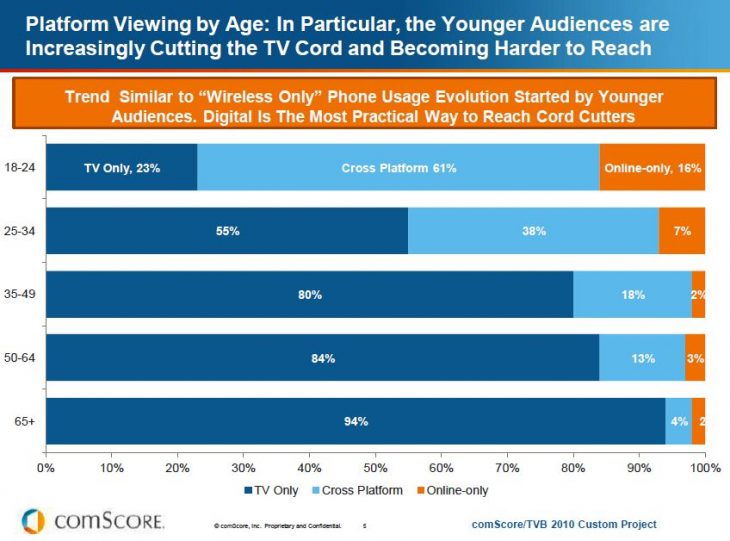
BANFF – Bryan Segal, vice-president of sales for Comscore, rattled off TV and mobile statistics for the industry during his keynote session at the Banff World Media Festival. As Comscore has reported before, Canadian online users are more engaged than ever.
• Canada still leads the world in all measures of engagement – 77% of Canadians use the Internet at home or work.
• Our TV viewing by platform shows an increase in online only and cross-platform viewing: 71% TV, 5% online only and 24% cross platform. In particular, younger viewers aged 18-24 are “cutting the TV cord and becoming harder to reach” with TV only. Sixteen percent of these viewers watch content only online – mainly due to convenience. What will the new crop of native users bring? Can’t tell yet.
• Canada is one of the leaders in mobile smart phone penetration with a raw percentage increase of 17.2% over last year. One in two Canadians now own a smart phone. RIM, of course, is no longer the leader in the smart phone market in Canada: Google leads, then Apple then BlackBerry.
• The mobile phone retail market is soaring with more Canadians than ever using their smart phones for the shopping experience with 27% of users taking a picture of a product, 25% texting or calling a contact about a product.
• Social networking continues to grow at almost double the pace as the Internet with nearly one in five minutes online globally being spent on social networking; with three out four minutes spent on Facebook and one in ten global online users reachable on Twitter. Social networking is not going away.

Should we rethink how we measure impressions?
Segal also urged us to rethink how we value online page impressions. He suggests moving to viewable, validated impressions is a game changer and that advertisers will pay more for more effective reach.
Segal contends that “counting unlimited, served impressions hurts advertising economics” and that the solution is digital scarcity – to only count users’ impressions that make a real impact. This version of scarcity is based on supply and demand and a new model to measure this impact where impressions are in-view (not necessarily “above the fold”) and targeted with a brand safe environment.
What do you think? Let us know in the comments box below or in an e-mail at editorial@cartt.ca.
Tara Blasco Raj is in Banff this week covering the Banff World Media Festival for Cartt.ca.



